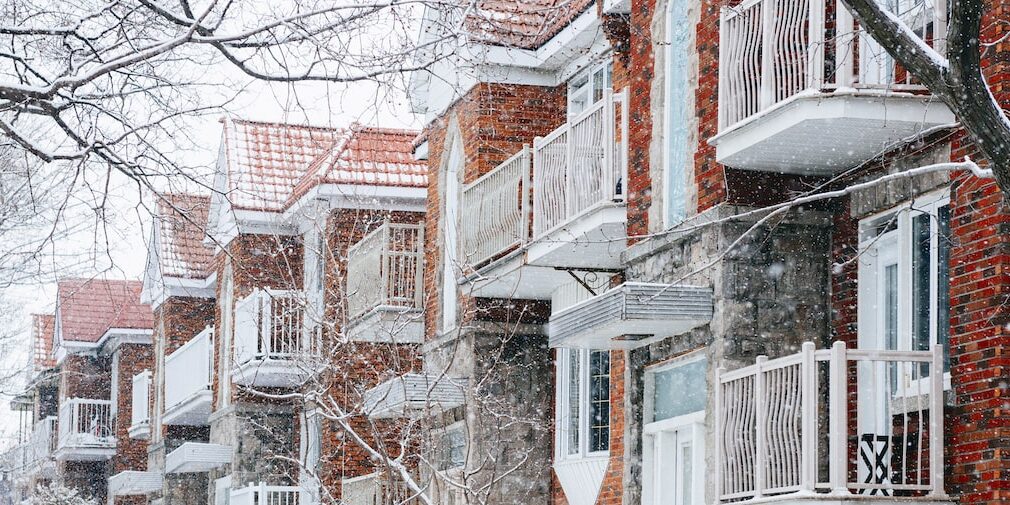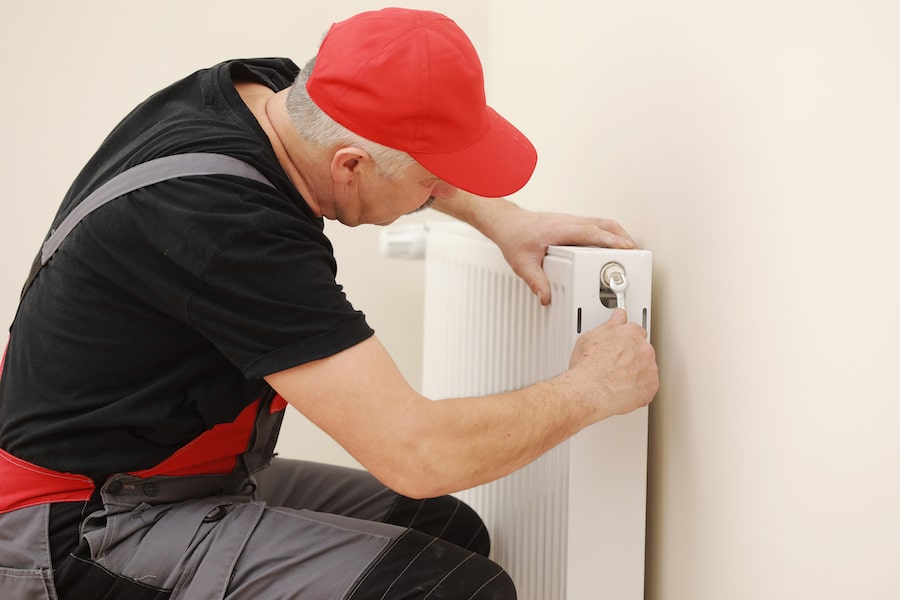For most landlords, long gone are the days when preparing your rental property for winter meant dropping off a bundle of firewood and a box of matches. And in this economy, neither you nor your tenant can afford to waste heat. Work smarter, not harder, to keep your rentals warm and cozy all season long using the following tips.
Winterizing the Interior of Your Rental Property
Taking a proactive approach to seasonal maintenance will save you money, time, and stress. As long-term landlords know, waking up to a 3 am call about a burst pipe isn’t the best way to start your day. That’s why it’s important to get ahead of the weather by leveraging Bay Property Management Group’s advice:
- Reverse ceiling fans. By changing the direction of the ceiling fans, a gentle updraft is produced. The updraft forces warm air that has risen to be pushed down into the room. Make it happen by “revers[ing] the motor and operat[ing] the ceiling fan at low speed in the clockwise direction,” EnergyStar says.
- Set the temperature. Don’t allow the temperature to dip below 60ºF to protect against frozen pipes. Frozen pipes can burst, which can cause $5,000+ in water damage.
- Test the alarms. Make sure all smoke alarms and CO2 detectors are functioning properly. The risk of carbon monoxide poisoning rises during winter storms as people turn up the heat to stay warm, according to research from Rutgers University, so protect your tenants by checking their alarms.
- Clean the chimney. No matter who may or may not be scurrying up the chimney this winter, a dirty fireplace flue and chimney are a recipe for disaster. Hire a professional to clean everything out, then remind your tenant to keep the area tidy and close the flue when not in use.
- Insulate exposed pipes. Pipes along exterior walls are at the biggest risk of freezing in colder temperatures. Keep them warm with insulating foam, which you can find online or at your local home improvement store.
- Add extra insulation. The pipes aren’t the only things that need some extra care! As applicable, make sure the attic has the recommended 10-14 inches of insulation for optimal heat retention, Bay Property Management Group says.
Pro Tip: If the temperatures drop dramatically, advise your tenants to keep a faucet dripping cold water overnight. As Consumer Reports notes, “running water through the pipe – even at a trickle – helps prevent pipes from freezing.”
Exterior Winterizing Tasks for Your Rental Property
Now that the interior is squared away, it’s time to head outside. Bay Property Management Group suggests you:
- Prevent frozen pipes. Turn off exterior faucets and hose bibs. Steve Allen, technical expert at Harvey Water Softeners, highlighted the importance of this step in a Homes and Gardens article: “Although a garden faucet is outside of the property, if it becomes frozen, it can cause a joint inside the property to come apart and leak.”
- Service HVAC systems. If you skipped out on replacing your air filters in the fall, now is the time to execute. Test the systems and ensure the air quality is good before checking this task off your list.
- Evaluate doors and windows. Hunt for leaks, particularly around the frames of all windows and doors. If you’re not sure how to test for leaks, HouseLogic recommends holding a lit stick of incense near the window and door frames, then watching for smoke movement. Use caulk, sealant, or weather-stripping to plug up any leaks you find.
- Remove window A/C units. Drain the unit if necessary, then store it away until warmer months return.
Now that the inside and outside of the property have been prepared, let’s talk about how your tenants can keep their energy bill as low as possible without sacrificing comfort.
Reducing Winter Energy Use Without Going Cold
Keeping warm doesn’t have to mean pushing the energy bill higher and higher. If you’ve performed all the advised maintenance we’ve listed, your tenants will be well on their way to a cozy winter. However, there are a few cost-effective strategies they can leverage from SMO Energy to stay warm without breaking the bank:
- Close the curtains at night. Curtains act as an insulator between the interior and the cold air outside. If they have spare curtains, you can recommend doubling up to increase the insulation. However, they should open the windows during the day to capture as much of the sun’s rays as possible.
- Close off unused rooms. Heating the whole house when everyone’s consolidated in one room is a waste, depending on the size of the unit and the number of people therein. Invite your tenants to close the door to any areas they don’t use regularly – but remind them that they shouldn’t let the unused rooms get too cold, especially if water pipes are in the walls.
- Help heat flow freely. Invite your tenants to re-familiarize themselves with the air vents. They may need to rearrange the furniture to prevent heat from getting trapped by big furniture pieces, EarthEasy notes.
No matter the weather, the TurboTenant team hopes you and your tenants stay warm this winter. If you’d like more educational content delivered straight to your inbox, sign up for our weekly newsletter and check out our latest webinar topic.
TurboTenant teamed up with Lula, an award-winning maintenance management solution, to provide you with Maintenance Plus! Currently available in select markets, Maintenance Plus will automate your maintenance requests from start to finish.

